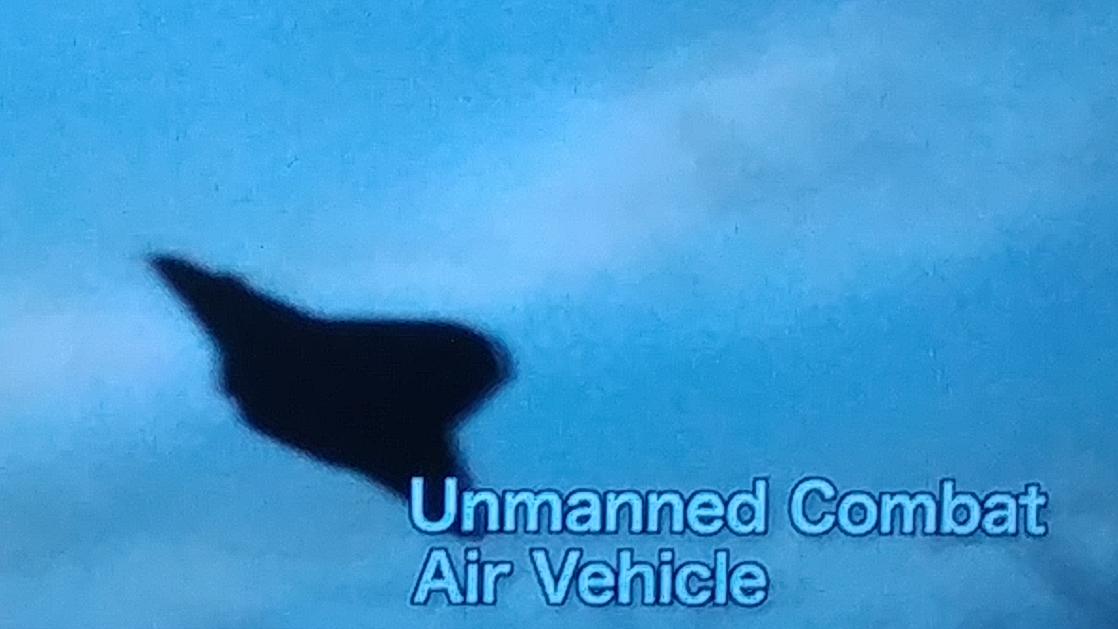This is the combat drone Japan has been building in secret

SUMMARY
Unmanned combat air vehicles, or UCAVs, are seen as a key part of the future of military aviation. A number of countries have openly been developing these vehicles, including the United States, Russia, and France.
But as We Are The Mighty has learned, Japan also was developing a UCAV, but didn't tell anyone.
During a recent Air Force conference near Washington, We Are The Mighty witnessed a video at the Kawasaki booth that revealed a brief clip of the company's research and development efforts into a UCAV. The UCAV appeared to be similar to the Boeing X-45 and Northrop Grumman X-47 test vehicles.
An initial request for information was declined by a company representative, who told us that the Japanese government did not wish to discuss the program. The next day, another representative claimed to have no knowledge of the program.
Only after a third Kawasaki representative, Takumi Kobayashi, was forwarded a cell phone photo of the UCAV's cameo did he state that it was "an experimental aircraft tested about 10 years ago" and that "it was a research project funded by Japan MOD." Kobayashi later stated in an e-mail that the described the UCAV as "a project in 2008." Japan does maintain a Self-Defense Force and established a Ministry of Defense in 2007.
When WATM asked Dave Deptula, a retired Air Force lieutenant general who was the Air Force's first deputy chief of staff for intelligence, surveillance and reconnaissance who now serves as the dean of the Mitchell Institute for Aerospace Studies, about whether he had any indication Japan was developing a UCAV, he had a one-word answer: "No."
This points to Japan's UCAV program being carried out behind a veil of secrecy comparable to those used with American black projects like the F-117 Nighthawk.
The likely reason for this veil of secrecy and the reluctance to discuss the Kawasaki UCAV lies in Article 9 of the Japanese Constitution. This provision states "the Japanese people forever renounce war as a sovereign right of the nation and the threat or use of force as means of settling international disputes," and that "land, sea, and air forces, as well as other war potential, will never be maintained."
The Japan Maritime Self-Defense Force helicopter destroyer JS Hyuga (DDH-181) underway in the Pacific Ocean as U.S. Navy Seahawk helicopters hover nearby. Japan calls this carrier-like vessel (Photo: U.S. Navy)
This provision explains why Japan considers its light carriers of the Hyuga and Izumo classes to be "helicopter destroyers." The Italian carrier Giuseppe Garibaldi, displacing about 10,500 tons as compared to the roughly 19,000-ton displacement of the Hyuga, operated AV-8B+ Harriers during the 2011 NATO intervention in Libya.
How does Kawasaki's UCAV fall within those restrictions? Its apparent similarity to the X-45 and X-47 opens the possibility that it may not. Deptula told WATM in a phone interview that UCAVs presently fit "much more in an offensive context as opposed to air defense" given the current state of technology.
According to specs available at GlobalSecurity.org, the baseline X-47 did not have a payload capability, but the larger X-47B had two weapons bays and was able to carry 4,500 pounds of ordnance. A planned X-47C was to increase the payload to 10,000 pounds.
Inquiries from WATM to Japan's Ministry of Defense received no responses, but the Japanese embassy in the United States did respond to an inquiry, offering to have a defense attaché contact Kawasaki for more information. When asked about any plans the Japanese Self-Defense Force had involving UCAVs, they stated, "The Japanese self-defense force is currently not planning on acquiring or deploying UCAVs."
SHARE
